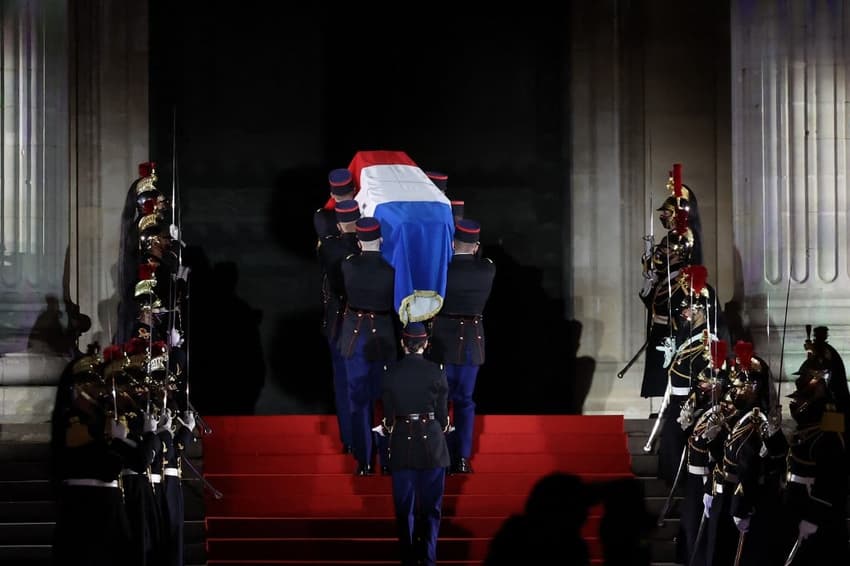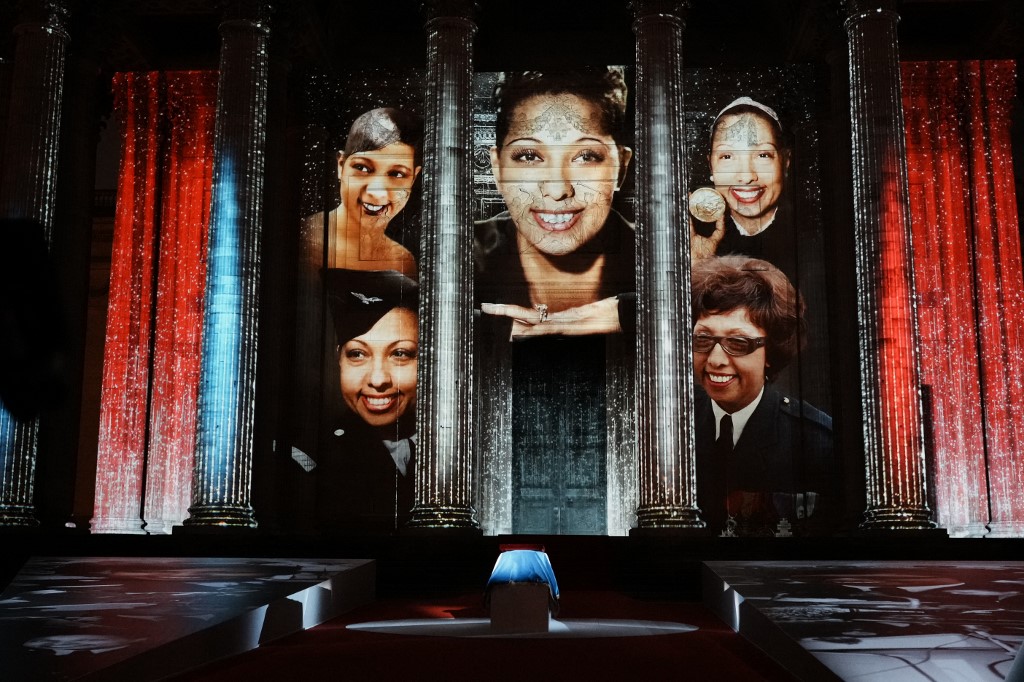French history myths: Josephine Baker is buried in the Panthéon

The Paris Panthéon is where France honours its greatest sons (and a few of its greatest daughters), but what's the situation with the US-born Josephine Baker?
Myth: Jospehine Baker, the US-born dancer, Resistance hero and civil rights activist is buried in the Panthéon, having been given France's highest posthumous honour in 2021.
The Panthéon, in Paris' 5th arrondissement, is a very exclusive club - it's reserved for men and women who are judged to have been exceptional French citizens, and only the president can grant someone the honour of a place there.
There exists in French a verb - panthéoniser - to describe the process of being granted a place in the Panthéon, which often happens many years after the individual's death.
5 things to know about the Panthéon
It's entirely true that Josephine Baker - a naturalised French citizen who was born in the US - was panthéoniser in 2021, on the decision of Emmanuel Macron, who said: “Dear Josephine - You are entering the Panthéon because although you were born American there is no-one more French than you.”

Images of Josephine Baker are projected on the Pantheon monument during the ceremony in 2021. Photo by Thibault Camus / POOL / AFP
She was honoured for her work for the French Resistance during World War II, as well as her post-war work on civil rights both in France and the US.
But of the 81 people who have so far been granted the honour of a place in the Panthéon, not all of them are actually buried there.
Some people are panthéoniser immediately after their death, while others are inducted years later, often after a public campaign, and in this case a decision must be made on whether to disinter the body and rebury it in the Panthéon.
In the case of moving a body, the family’s permission is sought first. If they are not happy with the idea, sometimes soil from a person’s grave is moved to the Panthéon instead, while the building also contains several urns that house the hearts of an honoured citizen.
Josephine Baker died in 1975 and was buried in Monaco, where she was living at the time.
In 2021 her descendants were not happy with the idea of digging up her body and moving it to Paris, so the coffin that was carried into the building in November 2021, draped with the French flag, was in fact filled with soil collected from places that had been important to Baker during her life.
Inside the building, each inductee has a tomb and the tombs are largely identical, regardless of whether their body is buried there or not. The building also contains space for more tombs for future inductees.

A picture taken on January 7, 2022 shows the tomb of Josephine Baker in the Panthéon. Photo by Ludovic MARIN / various sources / AFP
This article is part of our August series on myths and misconceptions about French history.
Comments
See Also
Myth: Jospehine Baker, the US-born dancer, Resistance hero and civil rights activist is buried in the Panthéon, having been given France's highest posthumous honour in 2021.
The Panthéon, in Paris' 5th arrondissement, is a very exclusive club - it's reserved for men and women who are judged to have been exceptional French citizens, and only the president can grant someone the honour of a place there.
There exists in French a verb - panthéoniser - to describe the process of being granted a place in the Panthéon, which often happens many years after the individual's death.
5 things to know about the Panthéon
It's entirely true that Josephine Baker - a naturalised French citizen who was born in the US - was panthéoniser in 2021, on the decision of Emmanuel Macron, who said: “Dear Josephine - You are entering the Panthéon because although you were born American there is no-one more French than you.”

She was honoured for her work for the French Resistance during World War II, as well as her post-war work on civil rights both in France and the US.
But of the 81 people who have so far been granted the honour of a place in the Panthéon, not all of them are actually buried there.
Some people are panthéoniser immediately after their death, while others are inducted years later, often after a public campaign, and in this case a decision must be made on whether to disinter the body and rebury it in the Panthéon.
In the case of moving a body, the family’s permission is sought first. If they are not happy with the idea, sometimes soil from a person’s grave is moved to the Panthéon instead, while the building also contains several urns that house the hearts of an honoured citizen.
Josephine Baker died in 1975 and was buried in Monaco, where she was living at the time.
In 2021 her descendants were not happy with the idea of digging up her body and moving it to Paris, so the coffin that was carried into the building in November 2021, draped with the French flag, was in fact filled with soil collected from places that had been important to Baker during her life.
Inside the building, each inductee has a tomb and the tombs are largely identical, regardless of whether their body is buried there or not. The building also contains space for more tombs for future inductees.

This article is part of our August series on myths and misconceptions about French history.
Join the conversation in our comments section below. Share your own views and experience and if you have a question or suggestion for our journalists then email us at [email protected].
Please keep comments civil, constructive and on topic – and make sure to read our terms of use before getting involved.
Please log in here to leave a comment.